 8 things to include in a garden wedding
8 things to include in a garden wedding
The elevated art of wedding draping
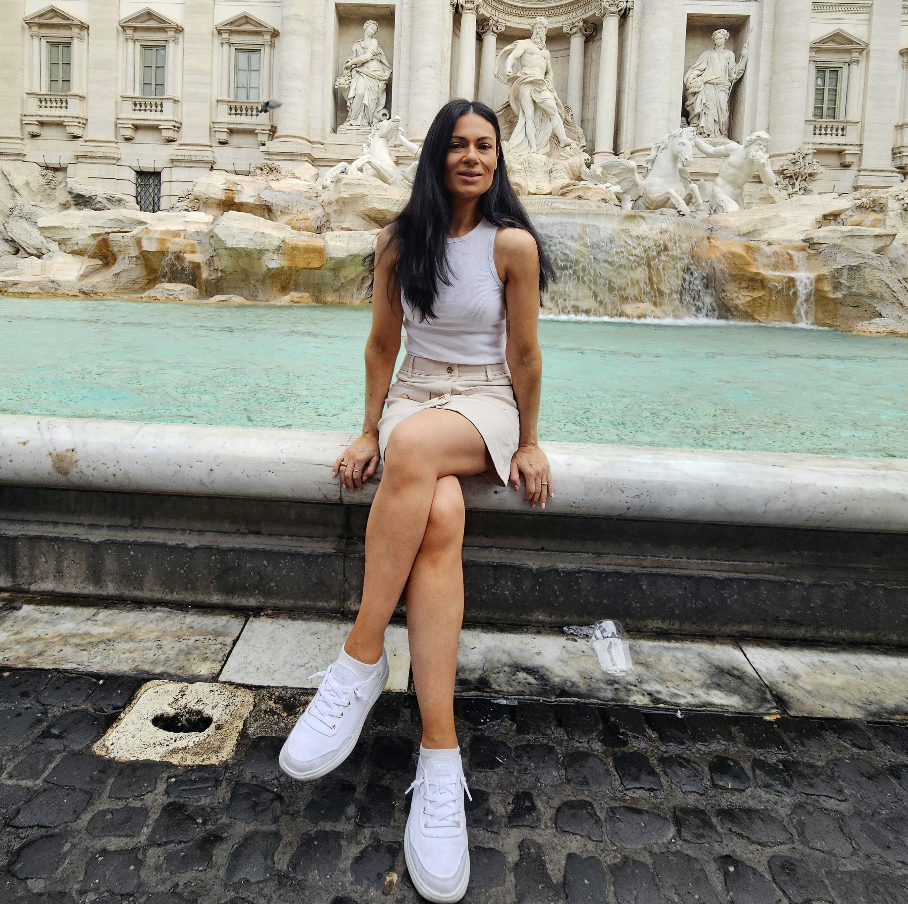
Draping might not be new, but it’s having a serious moment in modern wedding styling. No longer just a backdrop, fabric is being used in fresh, expressive ways to define spaces and shift the atmosphere, adding intimacy, romance or drama to key spaces.
From cascading ceiling installations to softly framed ceremony backdrops, wedding draping is redefining spaces with softness, structure, and a sense of movement. Granted, while draping has long been used in weddings (often to conceal walls or frame backdrops), it’s no longer just a finishing touch. Today, stylists are using fabric as a creative force: sculptural, expressive, and deeply intentional.
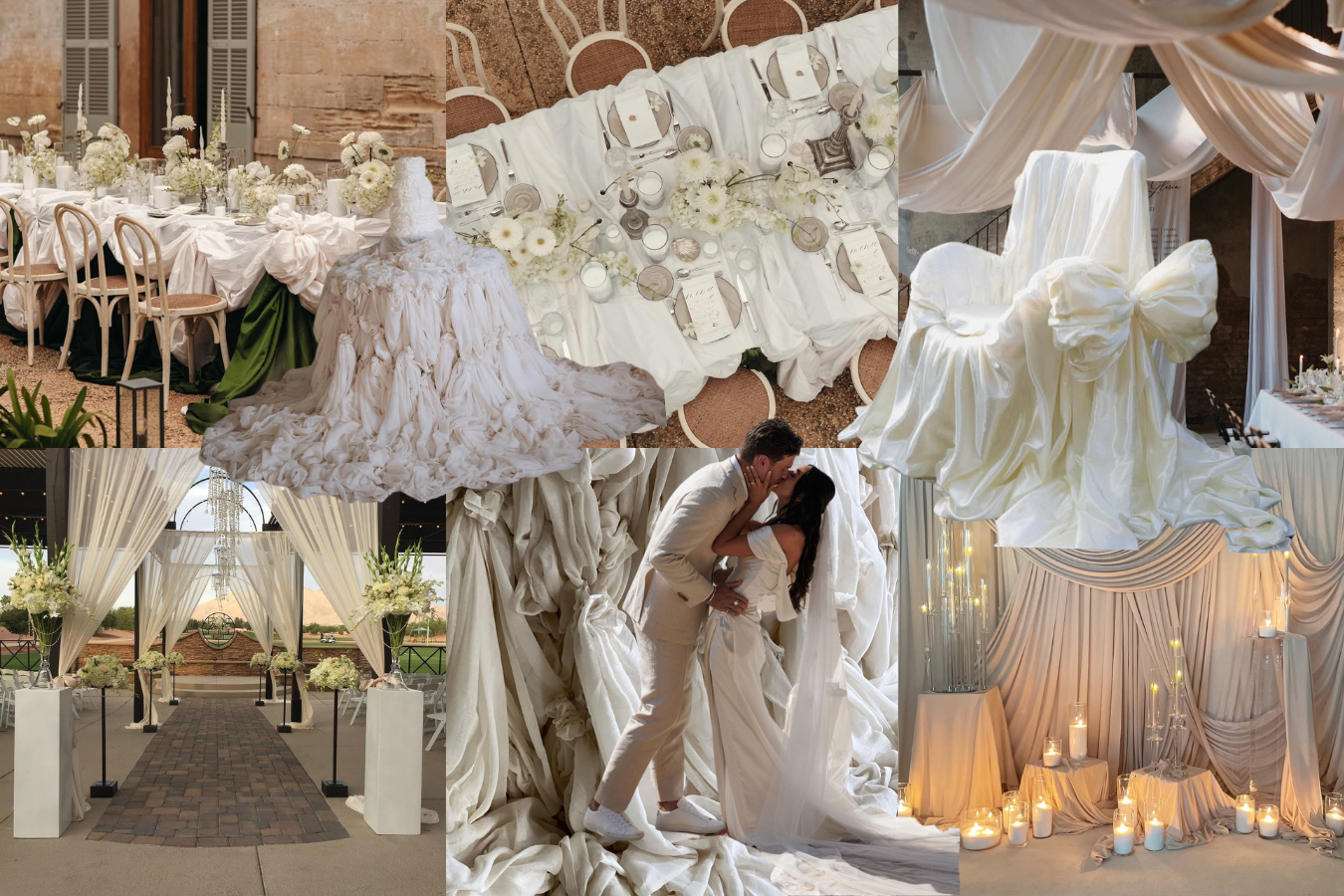
To explore what makes draping such a powerful styling element, we spoke with Kirsten Curtin, one half of the creative duo behind White Lane Events, the Sydney-based floral and styling studio she co-founded with Emma Bayliss. Known for their refined, romantic aesthetic, the pair are experts in creating mood through detail.
“We love working with draping as it adds texture, warmth and movement into the design,” Kirsten shares. “It can soften a harsh surface and can also add in a touch of luxury.”
It’s this versatility – and the emotion it brings – that makes draping so impactful. Here, we spotlight the looks we love, and the creative ways couples and stylists are using wedding draping to elevate their day.
9 ways to use draping at your wedding
Used thoughtfully, wedding draping can frame a moment, soften architectural lines, or add a sense of drama that doesn’t rely on flowers or furniture. Whether you’re working with a blank canvas or a space with strong existing features, fabric can tie everything together beautifully. Here’s how.
1. Suspended canopy
View this post on Instagram
This is one of the most striking uses of wedding draping, and a favourite in both traditional and contemporary settings. Think billowing fabric stretching across a marquee ceiling, or tulle gathered at a central point in a ballroom to draw the eye upward. Ceiling draping creates a canopy effect that instantly makes a large space feel more intimate. For added impact, pair it with lighting (think fairy lights, chandeliers, or warm up-lighting) for a soft, romantic glow.
2. Ceremony backdrops
View this post on Instagram
Draping here is all about softness and movement. Think floor-to-ceiling panels in sheer voile, silk, or tulle, gathered at the top or loosely knotted for an undone elegance. You can keep it monochrome for a minimalist look, or layer tones like blush, nude, and ivory for added depth. Add florals, branches, or even hanging lanterns to create dimension.
3. Aisle draping
View this post on Instagram
There’s something cinematic about a fabric-lined aisle. Think soft sheers knotted between low posts or fluttering ribbons anchored by wildflowers. Draping the aisle frames your walk, heightens the anticipation, and draws every eye to the moment.
4. Chair draping
View this post on Instagram
Chair draping has come a long way from traditional satin sashes. Today, it’s about texture, palette, and intentional styling. Picture loosely tied linens in tonal layers, asymmetrical bows in hand-dyed silk, or even frayed gauze trailing from every second chair for that perfectly imperfect look. It’s a subtle styling detail that photographs beautifully and adds softness to your seating plan.
5. Styling vignettes
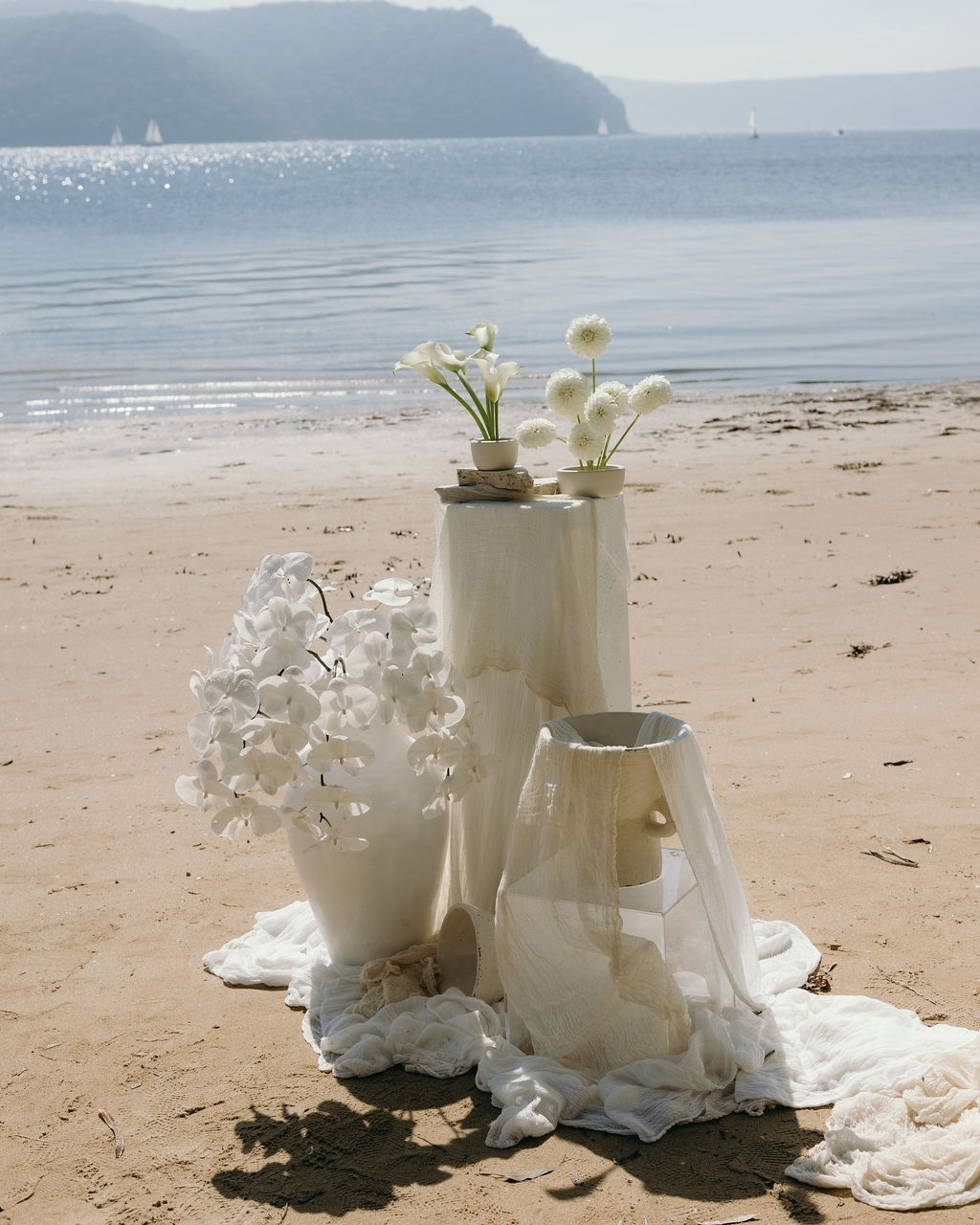
Styling by White Lane Events // Captured by Annaliisa Photography
Draping doesn’t need to cover an entire ceiling to make an impact. Sometimes, it’s the smaller moments, such as carefully styled nooks, entry displays, or welcome tables, that leave the strongest impression. A soft swathe of fabric over a plinth, pooled linen beneath a vessel of blooms, or gauze draped beneath a sign can add quiet luxury without overwhelming the space.
6. Layered table linen
View this post on Instagram
Forget matching linens. The new take on wedding draping involves layered textures. Think gauze over linen, silk over mesh, raw edges left to puddle on the floor. It’s about creating a tactile tablescape that feels curated, not fussy. Choose colours that complement your flowers or contrast your venue walls for extra impact. Add knotted napkins or draped runners that fall off one edge to keep it cool, not conventional.
7. Cake table draping
View this post on Instagram
Your cake deserves its own moment, and draping helps frame it like a piece of art. Use oversized fabric with generous folds: crushed silk, hand-dyed muslin, or layers of tulle add drama and dimension. Let the fabric pool onto the floor and play with asymmetry. Bonus: it hides the legs of whatever table you’re using and instantly elevates the look.
8. Textile signage with draped detail
View this post on Instagram
Printed fabric signage, such as menus or welcome signs on linen, can be styled with gentle folds or pooling fabric for a draped effect. While it’s not traditional wedding draping, when softened and layered, it creates a tactile, romantic look that ties in beautifully with other fabric elements.
9. Outdoor wedding draping
View this post on Instagram
In garden settings, wedding draping can be used to provide shade, soften harsh light, or create dreamy walkways. Fabric swags between trees, tent liners in gauzy fabrics, or even draped pergolas brings softness and flow to open-air spaces. It diffuses sunlight, adds dimension to minimal settings, and helps frame the natural beauty around you without taking away from it.
A study in softness and structure
When it comes to wedding draping, the fabric you choose sets the tone. Each fabric brings its own character, so consider the mood you want to create, and how the material will move, drape, and interact with light throughout the day.
Sheer materials like voile, chiffon, and organza are lightweight and ethereal: perfect for creating a soft, romantic atmosphere that moves gently with the breeze. Silk and satin offer a more luxurious feel, catching the light beautifully and adding subtle sheen to formal spaces.
For a touch of drama or depth, velvet brings richness and weight, ideal for autumn or evening weddings. If you’re after something textured and organic, linen or gauze can lend a relaxed, natural elegance to coastal or garden settings.
Draping also serves a practical purpose, such as concealing less-than-perfect walls, hiding rigging or AV equipment, and helping define different zones throughout the day.
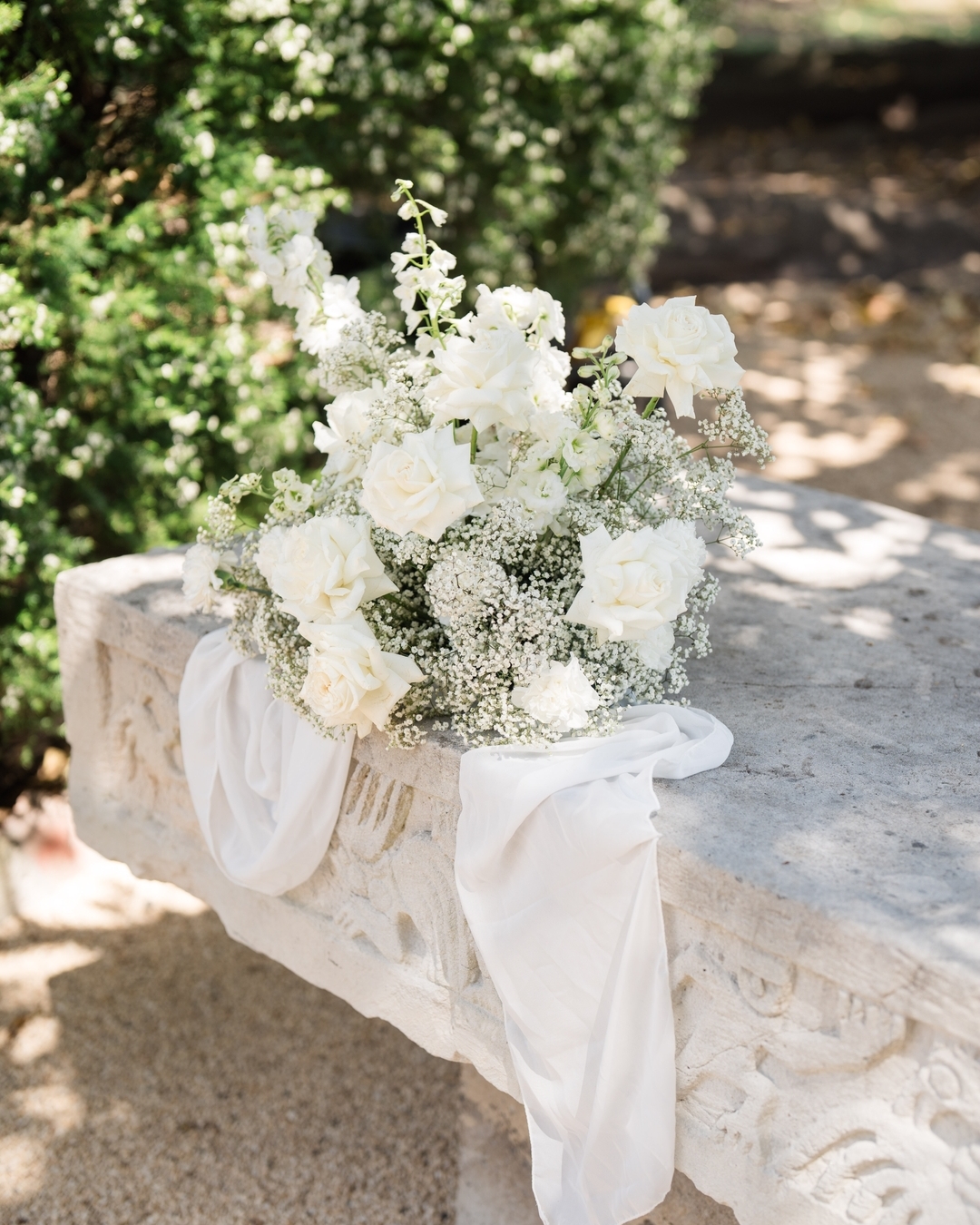
Minimalist restraint. Styling by White Lane Events
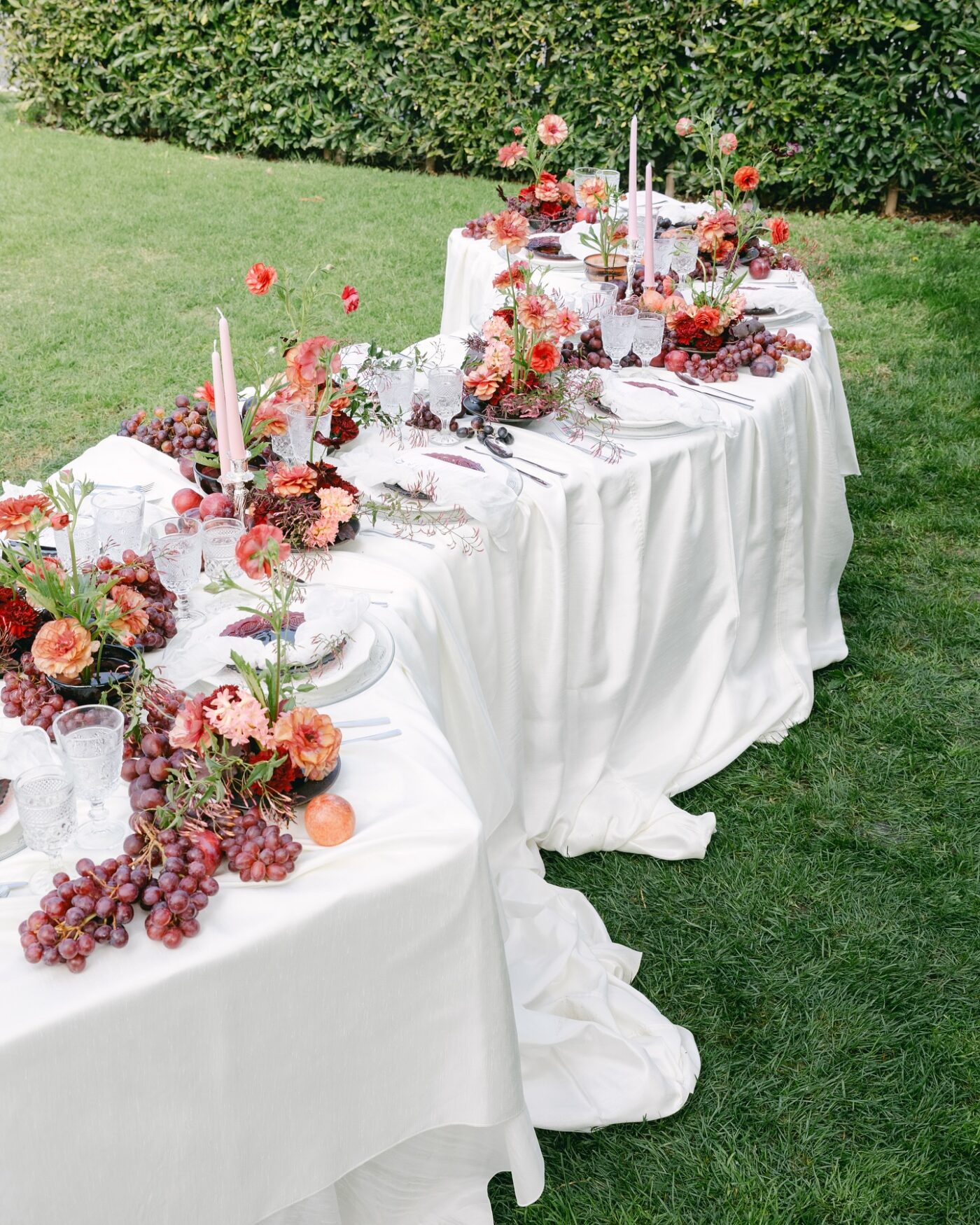
Maximalist expression. Styling by 7elements
Tips for working with wedding draping
A beautiful draping installation looks effortless, but behind the scenes, it requires planning, experience, and the right materials. To get it right:
- Choose fabric that suits the space. Light sheers like chiffon or voile work well in open, airy venues. Richer fabrics like velvet or silk add texture and depth to more formal settings.
- Think about lighting. Draping and lighting are a dream duo. Use fairy lights, up-lighting, or candles to enhance texture and shadow.
- Work with the bones of your venue. Draping can soften beams, columns, and ceiling height, but it should feel like it belongs there, not like an afterthought.
- Hire professionals. Draping usually requires rigging, ladders, and safety measures. A stylist or hire company will know what works and how to secure it properly.
- Use it with intention. Think about focal points. A single dramatic ceiling install or a sweeping backdrop may have more impact than overdoing every surface.
Common mistakes to avoid when styling your wedding draping
As with most things in styling, restraint and thoughtfulness go a long way. Some common pitfalls to sidestep:
- Not using enough fabric. A few thin pieces in a large venue can look unfinished. Generous pooling and fullness always read more luxuriously.
- Choosing the wrong fabric weight. Outdoors? Avoid ultra-light sheers unless they’re well-secured; wind will turn your look into chaos fast.
- Skipping the logistics. Not all venues allow ceiling installations, and many require fire-retardant materials. Always check first.
View this post on Instagram
Bring in a wedding stylist for your special day
From softening the lines of a modern venue to adding grandeur to a rustic setting, well-placed fabric has the power to turn any space into something worthy of the moment.
If you’re feeling inspired by these wedding draping details, now’s the time to connect with a stylist who understands how to work with fabric, space, and light to bring your vision to life.
Explore our directory of Easy Weddings stylists to find trusted professionals who know how to shape space, layer texture, and transform even the simplest fabric into something unforgettable.
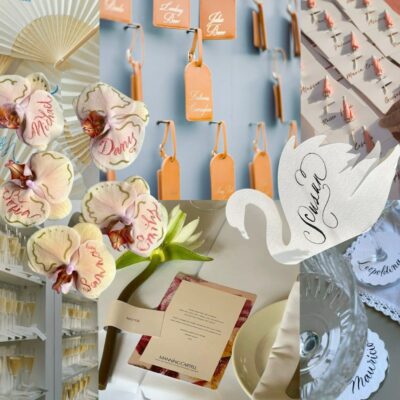 Say my name: 10 quirky wedding name card trends
Say my name: 10 quirky wedding name card trends 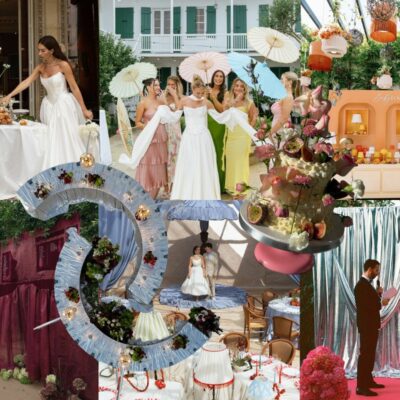 More is more: Maximalist wedding inspo for a colour-loving couple
More is more: Maximalist wedding inspo for a colour-loving couple